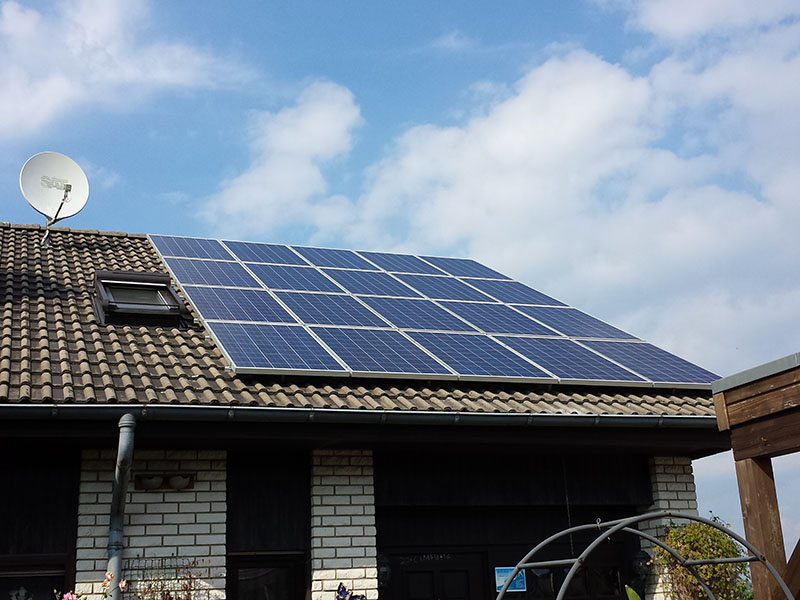
El cálculo de carga para sistemas de montaje fotovoltaicos debe considerar exhaustivamente los siguientes factores, incluyendo específicamente:
Carga de peso propio
Incluye el peso de los módulos fotovoltaicos, soportes, conectores y accesorios. Por ejemplo, el peso de los módulos es de aproximadamente 20 kg/m², el peso propio de... PV soportes Es de aproximadamente 10-15 kg/m², y el peso total del sistema no supera los 100 kg/m². El peso propio total debe calcularse en función de los materiales y las dimensiones durante la fase de diseño.
Carga de viento
Se calcula en función de la velocidad y dirección del viento, el coeficiente de variación de la altura de la presión del viento y el coeficiente de forma del lugar de instalación. Por ejemplo, en Wuhan, provincia de Hubei, la presión básica del viento para un período de retorno de 10 años es de 0,35 kN/m², y para un período de retorno de 50 años, es de 0,45 kN/m². En zonas con vientos fuertes, se debe prestar especial atención a la estabilidad lateral, lo que puede lograrse mediante la instalación de arriostramientos diagonales o muros cortavientos para reducir el coeficiente de carga del viento.
Carga de nieve:
La nevada, la densidad de la nieve y la pendiente de apoyo influyen directamente en la carga de nieve. Por ejemplo, las zonas nevadas deben diseñarse para un período de retorno de 50 años. La fórmula para calcular la carga de nieve es: coeficiente de pendiente × masa unitaria de nieve × acumulación de nieve. En algunas zonas, la carga de nieve puede fijarse en el 70 % para compensar la acumulación de nieve a corto plazo.
Cargas sísmicas
En zonas sísmicas, deben considerarse las fuerzas sísmicas horizontales. Estas fuerzas suelen ser menores que las presiones del viento, pero deben cumplir con los requisitos normativos (p. ej., GB 50009-2012). Las combinaciones de cargas deben incluir los efectos combinados de las cargas sísmicas y de viento.
Cargas vivas
Esto incluye la elevación de cargas durante la fase de construcción, así como las cargas del personal y los equipos de mantenimiento. Por ejemplo, la carga de construcción para un techo de tejas de acero con recubrimiento de color es de aproximadamente 0,15 kN/㎡, y para un techo de hormigón es de aproximadamente 0,45 kN/㎡Las cargas temporales durante la construcción deben considerarse durante el diseño.
Cargas especiales
Cargas ocasionales: Pueden ocurrir debido a condiciones climáticas extremas (tormentas de viento, granizo) o vandalismo.
Cargas de mantenimiento: Los sistemas fotovoltaicos en azotea deben cumplir un requisito de carga viva de al menos 2,0 kN/m².
Factor de seguridad y requisitos del código
El diseño debe combinar las cargas para los estados límite últimos y de servicio, considerando la combinación más desfavorable. El factor de seguridad suele estar entre 1,2 y 1,5. Los cálculos de carga deben cumplir con normas como el Código de Cargas en Estructuras de Edificación (GB 50009-2012).
Factores ambientales y geológicos
La capacidad portante de la cimentación, el tipo de suelo y las condiciones de construcción influyen en su diseño. Por ejemplo, las cimentaciones superficiales de hormigón armado deben cumplir con los requisitos de resistencia al deslizamiento, vuelco y levantamiento.
En resumen, el cálculo de carga de soportes fotovoltaicos Es necesario combinarlo con datos meteorológicos locales, propiedades de los materiales y requisitos reglamentarios, y se debe utilizar un análisis de combinación de múltiples condiciones de trabajo para garantizar la seguridad y la estabilidad estructural.